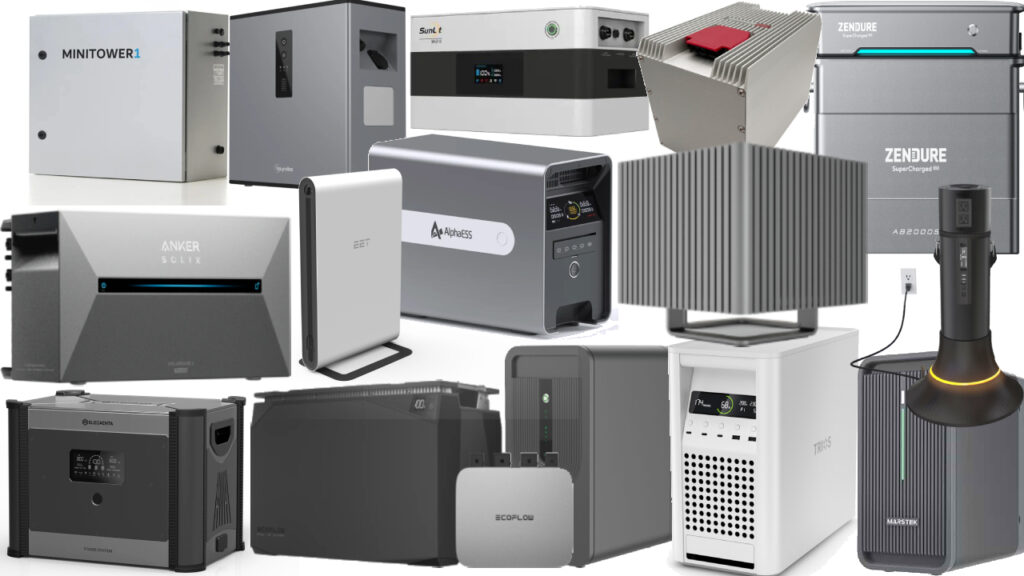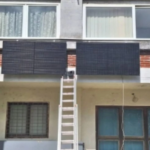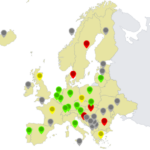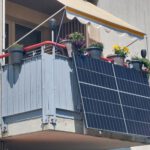
Balcony Solar Breakthrough: Study Shows Major Cost Savings Through Storage Solutions
Balcony solar systems are booming in Germany – and with them, the demand for matching battery storage. A new market study by leading energy research institute EUPD Research, in collaboration with solar storage innovator Anker SOLIX, now reveals: adding storage significantly increases the cost-effectiveness of plug-in solar systems, turning them into a key driver of the energy transition.
Batteries Becoming the New Standard
According to the study, some 222,000 battery storage units were installed in connection with plug-in solar systems in 2024 – a 97% increase compared to the previous year. Strikingly, 90% of these storage systems were installed together with new PV systems, not added later. This marks a shift: storage is no longer seen as an optional extra but rather an integral part of modern balcony solar setups.
At the same time, the average capacity of plug-in PV systems is rising – from 0.8 kWp in 2023 to 0.91 kWp in 2024. The study forecasts 675,000 new systems to be installed in 2025, amounting to a total of 635 megawatts in new capacity across German rooftops and balconies.
Up to 64% Savings on Power Bills – Payback from Four Years On
The study analyzes the economics of various PV-storage combinations using three typical household consumption profiles. A standout scenario: a household using a system with 2,000 Wp PV capacity and a 2 kWh battery can cut power bills by up to 64%, reaching payback in just four years.
Even smaller setups prove cost-effective: a one-person household using 1,000 Wp PV and 1 kWh storage can reduce grid dependency by around 45% with a five-year payback period. This shows that storage can be worthwhile even with moderate consumption – as long as self-consumption is optimized.
Real-Life Data Confirms the Benefits
To verify the financial benefits, Anker SOLIX analyzed anonymized user data from thousands of “Solarbank” households in Germany, covering the period from August 2024 to March 2025. The results are convincing:
- Self-consumption increases by over 50% with battery storage.
- A typical setup with 4 panels and 3.2 kWh storage achieves average annual savings of €373.
- The average payback time is 5.4 years.
- In some cases – with optimal orientation, high usage, and low base consumption – savings of over €900 per year were recorded.
High Interest, but Economic and Regulatory Barriers Remain
Despite growing enthusiasm – with about 50% of systems installed as DIY – challenges remain. 68% of surveyed users cite the high upfront cost of storage as the main barrier; 73% still consider storage not yet economically attractive.
Regulatory uncertainty also complicates adoption, from unclear registration rules to inconsistent technical standards. A lack of standardized subsidy programs at municipal or state level adds to the problem. Tenants in particular often lack access to solar subsidies, even though urban multi-family buildings offer vast untapped potential for plug-in systems.
The study highlights this disconnect between technological potential and perceived affordability, and calls for better incentives, more transparency about real-life savings, and easier access to plug-and-play solutions – especially for renters.
Looking Ahead: Plug-in Storage as a Key Pillar of the Energy Transition
The EUPD study clearly shows that plug-in PV systems with storage are no longer a niche – they are becoming a core component of decentralized energy generation. Demand is shifting toward larger PV and battery systems, as household energy needs grow. Anker SOLIX’s user data reveals key trends:
- Systems with more than 3 kWh of storage are gaining popularity.
- Demand for setups with four or more PV modules is increasing.
- More users seek higher AC output, to cover devices with steady power demands.
Currently, German law limits inverter output for plug-in systems to 800 watts – already enough to significantly reduce grid usage. But Anker SOLIX’s internal analysis shows that systems with up to 5,000 watts can potentially cover an entire day’s electricity needs for a household consuming 4,500 kWh annually, provided the system is well-oriented and paired with effective storage management.
The study’s modeled scenarios confirm: households with higher annual usage (3,000–4,500 kWh) can achieve self-consumption rates of up to 91% – if equipped with sufficiently large storage. In most cases, self-consumption is more cost-effective than feeding power into the grid, further boosting the appeal of solar-plus-storage solutions.
The full report, “Plug-In Solar PV & Storage Systems in Germany: Market Trends, Drivers, Barriers & Economic Viability”, is available on request at: ankersolix@schwartzpr.de.




